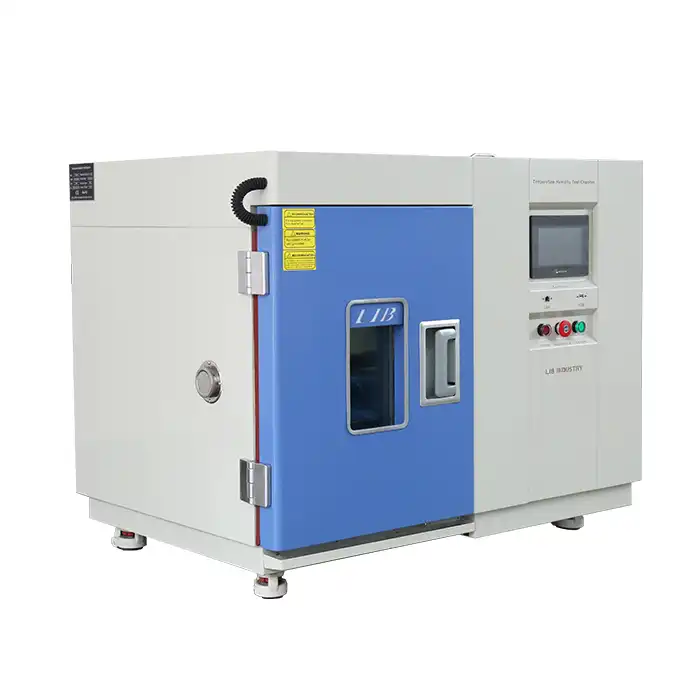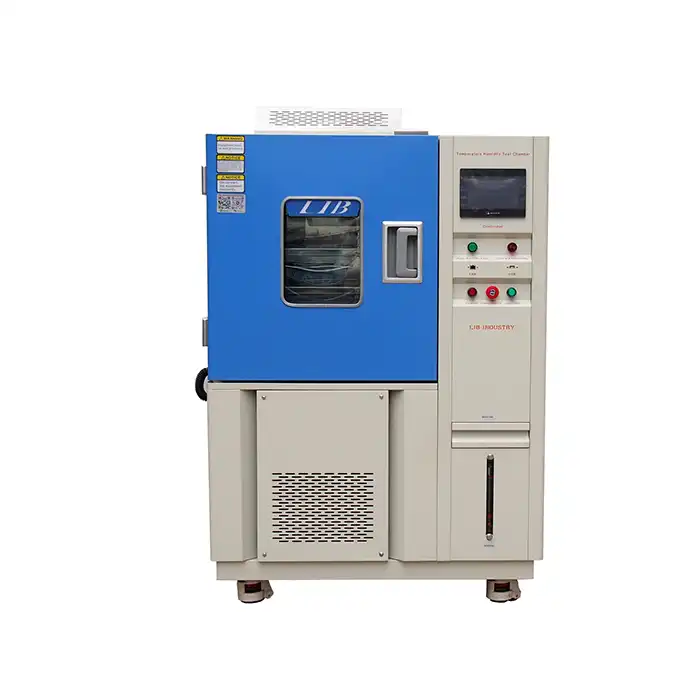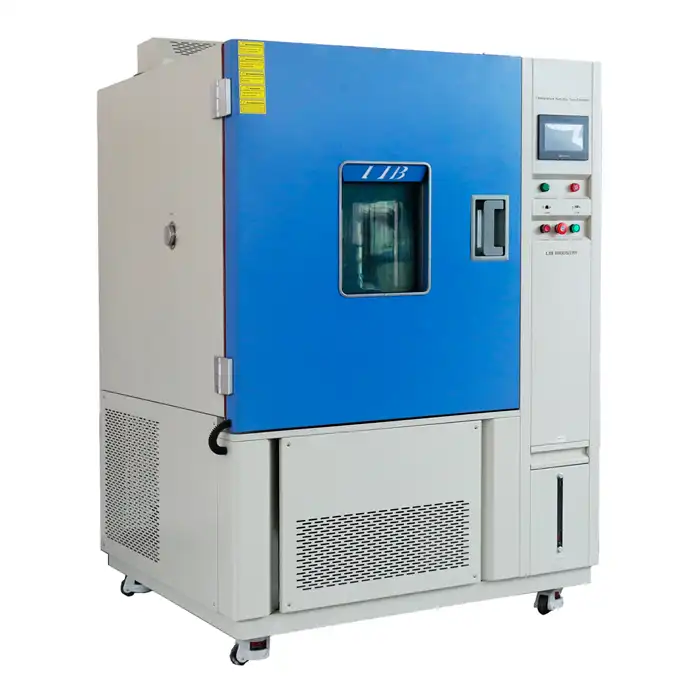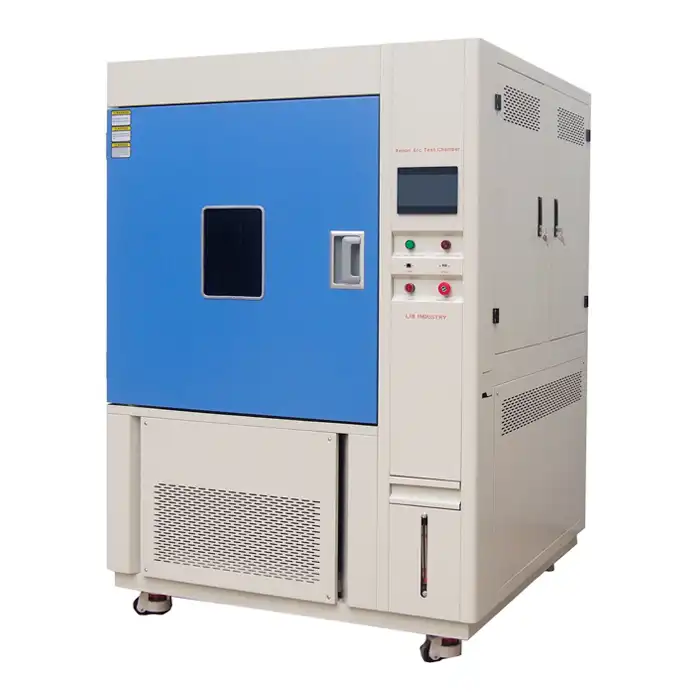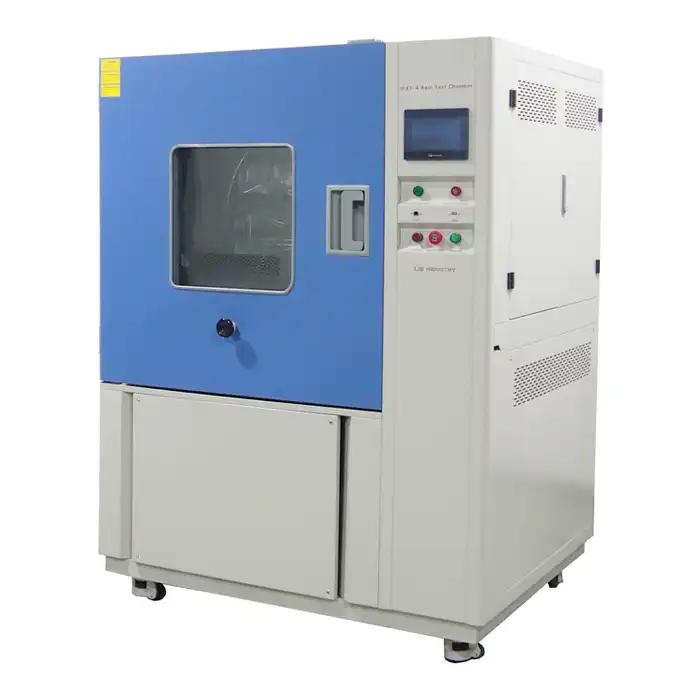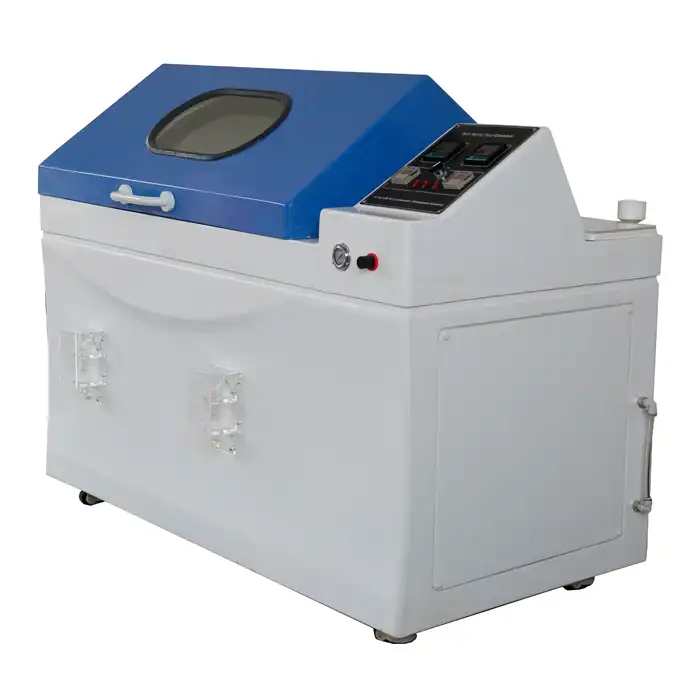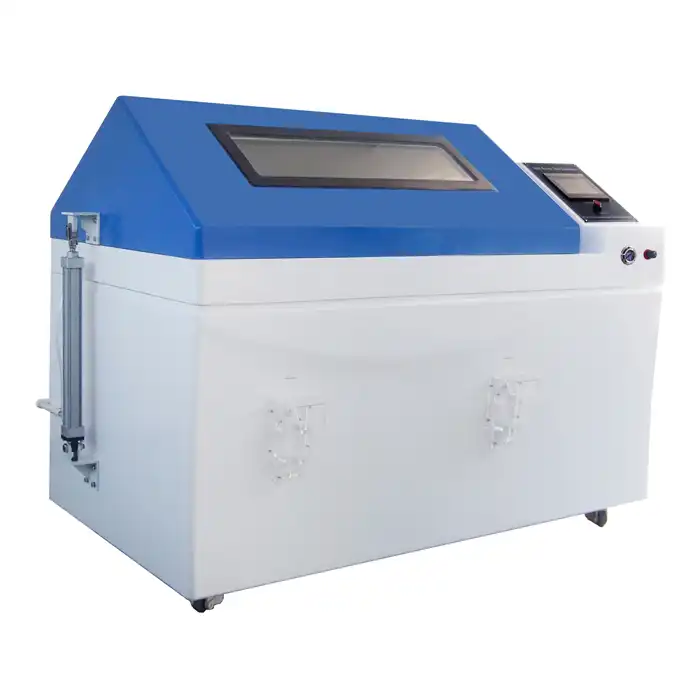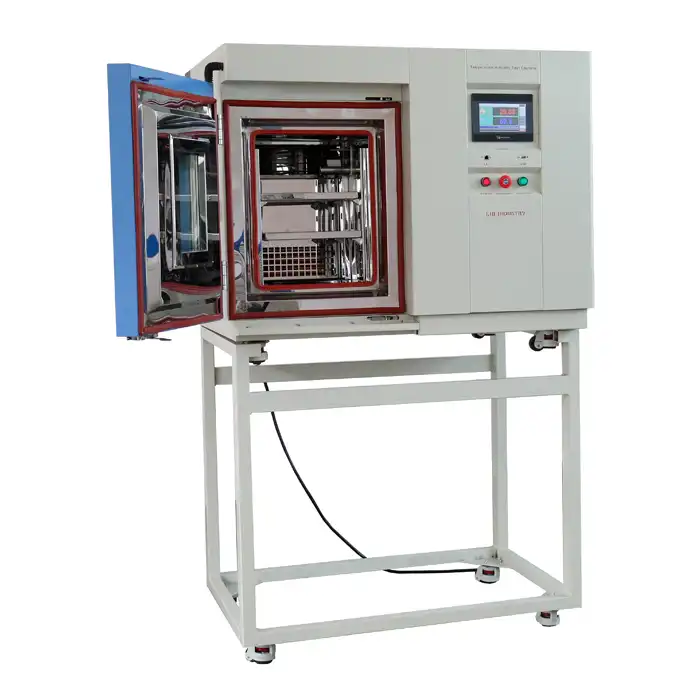Test Procedure of JIS Z 2371 Salt Spray Test Chamber
Corrosion resistance testing is critical for evaluating the durability of materials exposed to harsh environments. The JIS Z 2371 salt spray test chamber is a specialized tool designed for this purpose, adhering to the Japanese Industrial Standard (JIS) Z 2371.
What is the JIS Z 2371 Salt Spray Test Standard?
The JIS Z 2371 salt spray test standard defines a method to test the corrosion resistance of metallic materials. It simulates a saline environment to expose test samples to accelerated corrosion. This standard is widely recognized across various industries, including automotive, aerospace, and construction, ensuring that materials and coatings can endure prolonged exposure to salty conditions. The test plays a crucial role in quality control and product development, helping manufacturers predict how long their products can last in real-world scenarios.
Key Parameters in the JIS Z 2371 Salt Spray Test Procedure
Several key parameters must be meticulously controlled to ensure accurate and repeatable results during testing using a JIS Z 2371 salt spray test chamber:
- Temperature: The chamber is typically maintained at 35°C to replicate the temperature of a marine environment.
- Saline Solution Concentration: The salt solution contains 5% sodium chloride (NaCl) dissolved in distilled water.
- pH Level: The pH of the solution should range between 6.5 and 7.2, which mirrors the chemical composition of natural seawater.
- Duration: Test durations vary based on the material and coating being tested, often lasting between 24 and 1,000 hours.
How to Set Up a Salt Spray Test Chamber According to JIS Z 2371?
Setting up a JIS Z 2371 salt spray test chamber requires careful attention to detail. Begin by filling the chamber's reservoir with a 5% NaCl solution that meets the prescribed pH levels. Ensure the chamber is pre-heated to 35°C before introducing the test specimens. Samples should be positioned at a 15° to 30° angle to allow uniform exposure to the salt mist. Once the chamber is sealed, the salt spray is introduced via a pressurized nozzle, creating a corrosive fog that simulates harsh environmental conditions. It's crucial to monitor the chamber throughout the test to ensure temperature, humidity, and saline concentration remain within specified ranges.
JIS Z 2371 Salt Spray Test Chamber Test Process
The JIS Z 2371 salt spray test process follows a precise methodology designed to ensure reliable and consistent results. After the test chamber is set up, here's a breakdown of the typical process:
- Sample Preparation: Test samples should be cleaned and free from contaminants like oil or grease. This ensures that the results accurately reflect the material's inherent corrosion resistance.
- Test Parameters Monitoring: Throughout the test, the temperature is kept steady at 35°C, and the salt solution is continuously atomized to form a fine mist. The concentration of NaCl in the solution remains at 5%, with the pH monitored to stay between 6.5 and 7.2.
- Test Duration: The test duration varies depending on the material and its expected exposure conditions. For instance, a 24-hour test might be suitable for basic coatings, while heavy-duty materials may require up to 1,000 hours of exposure.
- Post-Test Evaluation: After completing the test, the samples are visually inspected for signs of corrosion, such as rust or pitting. The degree of degradation is then compared to predefined acceptance criteria, which helps determine the material's performance.
LIB JIS Z 2371 Salt Spray Test Chamber
At LIB Industry, our JIS Z 2371 salt spray test chambers are designed with precision and reliability in mind. Here are some key advantages of our chambers:
- Precise control system: Ensures precise control and stability of test conditions (temperature, humidity, salt spray deposition rate) in accordance with standard requirements.
- Various sizes available: A variety of test chambers of different sizes are available to accommodate test samples of different sizes and quantities.
- Corrosion-resistant materials: The test chamber itself is made of corrosion-resistant materials, such as PVC or FRP, to ensure its durability and reliability in highly corrosive environments.
- User-friendly operating interface: Easy to operate and maintain, convenient for users to set up and monitor tests.
- Safety protection devices: Equipped with various safety protection devices, such as over-temperature protection, water shortage protection, etc., to ensure the safety of operators and equipment.
At LIB Industry, we provide turnkey solutions that cater to your specific testing needs, from initial consultation to installation and training. For more information about JIS Z 2371 salt spray test chamber or other products, feel free to contact us at info@libtestchamber.com.
References
1. Japanese Industrial Standards Committee (JISC), JIS Z 2371 Corrosion Resistance Testing
2. ASTM International, ASTM B117 Salt Spray Testing Standard
3. Corrosion Science Journal, Salt Spray Chamber Testing Techniques
4. ISO 9227:2017, Corrosion Tests in Artificial Atmospheres
5. Materials Performance Journal, Corrosion Testing Methods and Procedures
6. Industrial Coatings Handbook, Corrosion Resistance and Durability Standards



